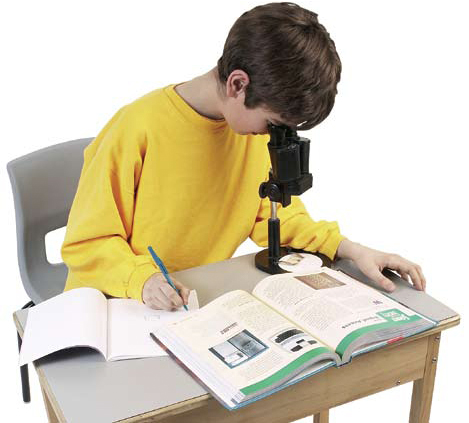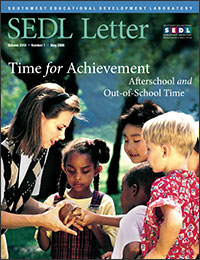Afterschool Science Classes Nurture an Interest in Nature

If a 10-year-old boy could pick his own class schedule, it’d be a safe bet to assume he’d choose a class called "Grossology." It’s no surprise, then, that that’s one of the more popular classes offered at the afterschool program at South Huchinson Elementary School in South Hutchinson, Kansas. The National Partnership for Quality Afterschool Learning identified the program as one of the promising practices sites with a science focus.
The afterschool program at South Hutchinson Elementary serves about 200 students a year with an average daily attendance of 75 students. Originally funded through the 21st Century Community Learning Centers Program, students are now charged $7 per 6-week class, although students from low-income families are often covered. Certified teachers, volunteers, and paraprofessionals teach the classes, and day teachers conduct the homework help sessions.
"Some of the classes are directly related to science lessons the students are studying during the school day. However, most of the classes are indirectly related to the day curriculum," says Mary Treaster, principal of the school. "In other words, the skills and concepts are the same, but the presentation and information are different. During the afterschool program science classes we try to focus on projects or topics that we are unable to teach during the school day due to time constraints."
"Grossology" is a kitchen chemistry class that is always full and receives many requests. Other popular classes at the preK–6 campus explore topics such as insects, small engines, space exploration, endangered animals, environment education, and sharks. The classes, which last for six weeks, each have between 8 and 15 students.
"All of the classes address the Kansas state science standards, and they are project-based and hands-on," Treaster says. She points out that this emphasis has paid off; in Kansas, elementary school students take the science assessment in the fourth grade, and for the last two years the fourth-grade students at South Hutchinson have earned the Standard of Excellence, a designation the Kansas State Department of Education uses to recognize schools that far exceed normal expectations.
Since the funding for the 21st Century Community Learning Center grant ended, the school was forced to conserve resources. The biggest impact was in training and staff development. The program has been forced to seek other grants to extend the staff development opportunities.
The program develops new classes when teachers discover a topic that interests the students. The insects class, for example, evolved a few years ago when the school’s theme was "Going Buggy." The classes are multi-aged, which creates a strong sense of community within the school as older students assist younger ones and share their experiences with them. Parents and community members are encouraged to volunteer as aides to strengthen the school’s bond with the community.
The classes evolve and expand based on the interests and needs of the students. The students, in return, respond enthusiastically.
"Our students love science, they love to discover new ideas and concepts, and they love to share their information with everyone. It is fun to see that spark in their eyes when they discover something they didn’t know before," Treastor says. "Science is a wonderful way to help students learn to find information for themselves and develop that love of learning."

Next Article: Out-of-School Program Breaks Boundaries, Empowers Students Through the Arts

